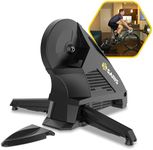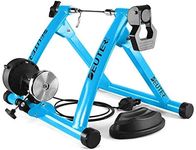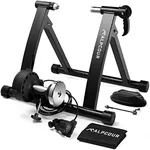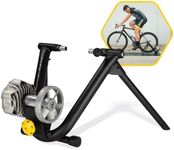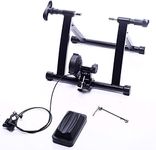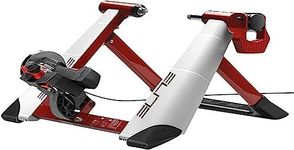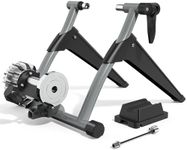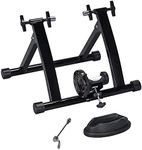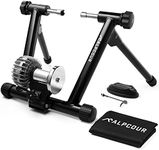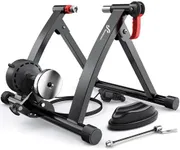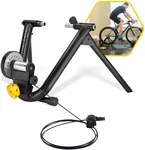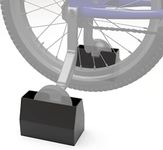Buying Guide for the Best Indoor Bike Trainer Stand
Choosing the right indoor bike trainer stand can significantly enhance your indoor cycling experience. Whether you're training for a race, trying to stay fit, or just looking for a way to ride your bike indoors during bad weather, the right trainer stand can make a big difference. Here are some key specifications to consider when selecting an indoor bike trainer stand, along with explanations to help you make the best choice for your needs.Type of TrainerThere are several types of indoor bike trainers, including wheel-on trainers, direct-drive trainers, and rollers. Wheel-on trainers are easy to set up and are generally more affordable, making them a good choice for beginners. Direct-drive trainers replace your bike's rear wheel and offer a more realistic ride feel and better power measurement, which is ideal for serious cyclists. Rollers require more balance and skill but can improve your bike handling skills. Choose based on your experience level and training goals.
Resistance TypeThe resistance type determines how the trainer simulates the feel of riding on the road. There are fluid, magnetic, and electronic resistance trainers. Fluid trainers offer a smooth and progressive resistance that increases with speed, making them feel more like outdoor riding. Magnetic trainers provide consistent resistance and are usually quieter. Electronic trainers can be controlled via apps and offer a wide range of resistance levels and training programs. Consider what type of resistance will best match your training needs and preferences.
CompatibilityCompatibility refers to whether the trainer stand can accommodate your bike's wheel size and axle type. Most trainers are compatible with a range of wheel sizes, but it's important to check if your specific bike fits. Additionally, some trainers require specific adapters for different axle types, such as quick-release or thru-axle. Ensure the trainer you choose is compatible with your bike to avoid any setup issues.
Noise LevelNoise level is an important consideration, especially if you live in an apartment or plan to use the trainer in a shared space. Fluid trainers are generally quieter than magnetic trainers, and direct-drive trainers tend to be the quietest. If noise is a concern, look for trainers that are specifically designed to operate quietly. Reading user reviews can also give you an idea of how loud a trainer might be.
Stability and Build QualityStability and build quality are crucial for a safe and enjoyable riding experience. A stable trainer will prevent your bike from wobbling or tipping over during intense workouts. Look for trainers with a wide base and sturdy construction. Higher-end models often offer better stability and durability, which can be important if you plan to use the trainer frequently or for high-intensity training.
Connectivity and Smart FeaturesMany modern trainers come with smart features that allow you to connect to training apps and track your performance. These features can include Bluetooth or ANT+ connectivity, power measurement, and the ability to simulate different terrains and gradients. If you enjoy structured training programs or virtual rides, a smart trainer with these features can greatly enhance your indoor cycling experience. Consider what level of connectivity and smart features you need based on your training preferences.
Portability and StorageIf you need to move your trainer frequently or have limited storage space, portability and ease of storage are important factors. Some trainers are foldable and lightweight, making them easier to transport and store. Check the weight and dimensions of the trainer and consider how easy it will be to set up and put away. This can be especially important if you plan to use the trainer in different locations or need to store it out of sight when not in use.
